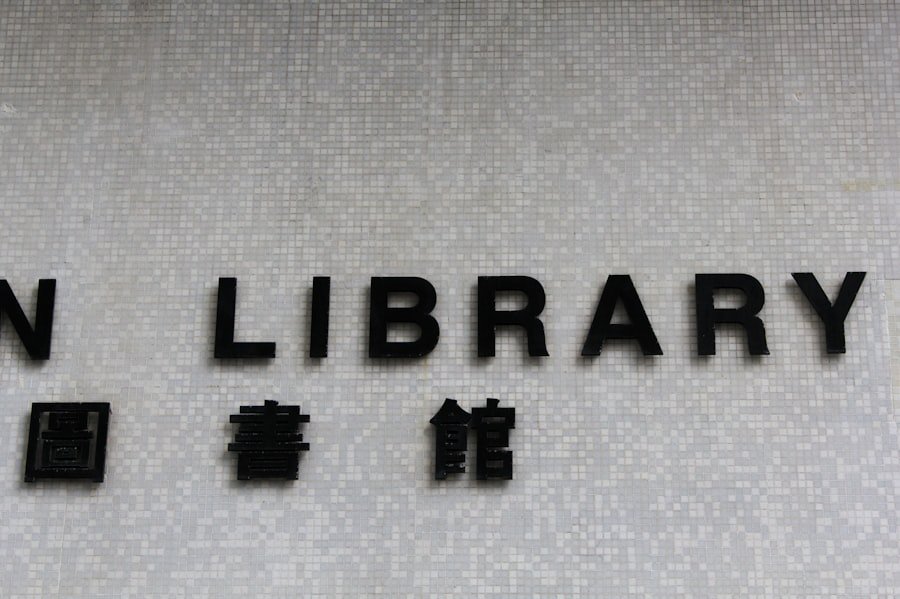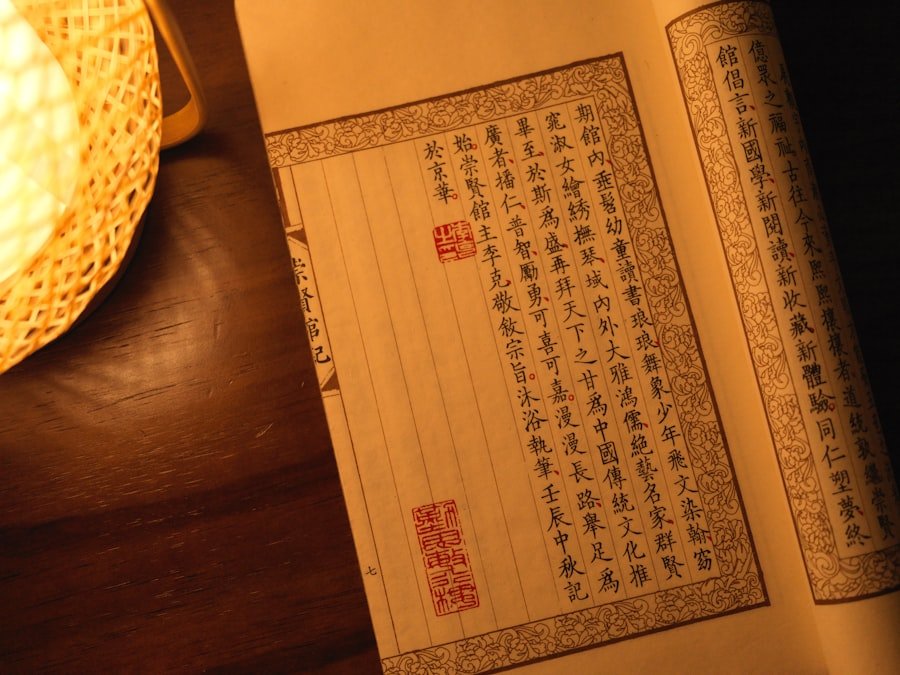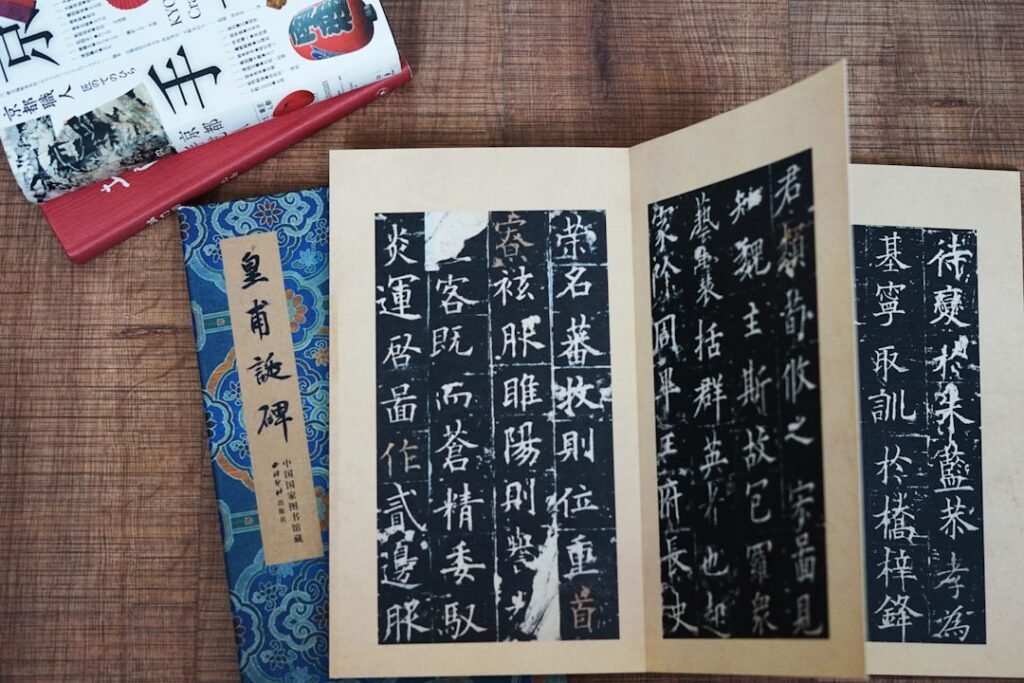Chinese calligraphy, an ancient art form, is often celebrated for its elegance and precision. However, beneath the surface of meticulously crafted characters lies a profound appreciation for imperfection. This beauty of imperfection is not merely a flaw; it is a testament to the artist’s journey, a reflection of their emotions, and an embodiment of the natural world.
In this art form, the strokes of the brush are not just tools for writing; they are extensions of the artist’s spirit, capturing the essence of their thoughts and feelings. The beauty of imperfection in Chinese calligraphy invites us to embrace the unpredictable nature of life itself, reminding us that true artistry often lies in the unrefined and spontaneous. As we delve deeper into this captivating world, we discover that the imperfections in calligraphy serve as a bridge between the artist and the observer.
Each stroke tells a story, revealing the artist’s state of mind and their connection to the environment around them. The subtle variations in ink flow and brush pressure create a dynamic interplay between control and freedom, allowing for a unique expression that resonates with viewers on a personal level. In this way, Chinese calligraphy transcends mere writing; it becomes a dialogue between the artist and the audience, inviting us to appreciate the beauty found in life’s imperfections. Master the art of Chinese calligraphy. Enroll now at the LC Chinese School in Oslo.
Table of Contents
ToggleSummary
- The beauty of imperfection in Chinese calligraphy lies in its naturalness and spontaneity.
- Zì rán (自然) in Chinese culture emphasises the harmony and authenticity of natural elements.
- Chinese calligraphy has a rich history and has evolved over centuries, embracing imperfections as part of its beauty.
- Embracing the naturalness of brush strokes and ink flow is essential in capturing the essence of Chinese calligraphy.
- Spontaneity and fluidity play a significant role in conveying emotion and expression in Chinese calligraphy.
Understanding the concept of zì rán (自然) in Chinese culture
The concept of zì rán, or “naturalness,” is deeply embedded in Chinese culture and philosophy. It embodies the idea that true beauty and harmony arise from the natural world, free from artificial constraints. In the context of Chinese calligraphy, zì rán encourages artists to embrace spontaneity and authenticity in their work.
This philosophy aligns with the belief that nature is inherently imperfect, yet it possesses an exquisite beauty that captivates the human spirit. By adopting this mindset, calligraphers are inspired to let go of rigid techniques and allow their brushstrokes to flow freely, reflecting the organic rhythms of life. Zì rán also extends beyond the physical act of writing; it encompasses a broader understanding of existence.
In traditional Chinese thought, humans are seen as an integral part of nature, and their actions should harmonise with its rhythms. This interconnectedness fosters a sense of humility and respect for the natural world, encouraging artists to draw inspiration from their surroundings. As calligraphers immerse themselves in this philosophy, they learn to appreciate the subtleties of their environment, allowing these influences to shape their artistic expression.
The history and evolution of Chinese calligraphy

The history of Chinese calligraphy is rich and multifaceted, tracing its roots back over two millennia. Initially developed as a means of communication, calligraphy evolved into a revered art form during the Han Dynasty (206 BCE – 220 CE). The introduction of various scripts, such as seal script and clerical script, marked significant milestones in its evolution.
Each script carried its own aesthetic qualities and cultural significance, reflecting the changing values and philosophies of Chinese society. As time progressed, calligraphy continued to adapt and flourish through various dynasties. The Tang Dynasty (618 – 907 CE) is often regarded as a golden age for calligraphy, with renowned masters like Wang Xizhi and Yan Zhenqing setting new standards for artistic expression.
Their works exemplified the balance between structure and fluidity, showcasing how calligraphy could convey both meaning and emotion. The evolution of Chinese calligraphy is not merely a chronological account; it is a testament to the enduring human spirit and creativity that transcends time.
Embracing the naturalness of brush strokes and ink flow
At the heart of Chinese calligraphy lies an intimate relationship between brush strokes and ink flow. The brush itself becomes an extension of the artist’s hand, allowing for a direct connection between thought and expression. Embracing this naturalness requires a deep understanding of how ink interacts with paper, as well as an appreciation for the unique qualities each brush possesses.
The varying thicknesses and textures of strokes create a visual language that speaks volumes about the artist’s intent. The act of writing becomes a meditative practice, where artists learn to let go of preconceived notions and allow their instincts to guide them. This process encourages a sense of freedom, enabling calligraphers to explore new techniques and styles without fear of failure.
As they experiment with different brush pressures and angles, they discover that each stroke carries its own personality—some may be bold and assertive, while others may be delicate and gentle. This exploration fosters a deeper connection to the art form, allowing artists to express their individuality through every character they create.
Exploring the significance of spontaneity and fluidity in calligraphy
Spontaneity is a cornerstone of Chinese calligraphy, infusing each piece with a sense of life and energy. Unlike rigid forms of writing that prioritise precision above all else, calligraphy celebrates the unexpected moments that arise during creation. This fluidity allows artists to capture fleeting emotions and thoughts, transforming them into tangible expressions on paper.
The spontaneity inherent in calligraphy reflects the unpredictability of life itself—a reminder that beauty often emerges from chaos. The significance of fluidity extends beyond mere aesthetics; it also serves as a metaphor for personal growth and self-discovery. As artists embrace spontaneity in their work, they learn to trust their instincts and embrace vulnerability.
This journey fosters resilience, encouraging them to view mistakes not as failures but as opportunities for growth. In this way, spontaneity becomes a powerful tool for self-expression, allowing artists to convey their innermost feelings with authenticity.
The role of imperfection in conveying emotion and expression in Chinese calligraphy

Imperfection plays a pivotal role in conveying emotion within Chinese calligraphy. Each stroke carries with it the weight of human experience—joy, sorrow, love, and longing—all expressed through subtle variations in technique. The beauty found in these imperfections resonates deeply with viewers, inviting them to connect with the artist on an emotional level.
A slight wobble in a stroke or an unexpected ink blot can evoke feelings that perfectly executed characters may fail to capture. Moreover, imperfection serves as a reminder that art is inherently human. It reflects the artist’s journey—the struggles they face, the lessons they learn, and the emotions they navigate.
By embracing imperfection, calligraphers create works that resonate with authenticity, allowing viewers to see themselves reflected in the art. This emotional connection transforms calligraphy from mere writing into a profound form of expression that transcends language barriers.
Techniques for embracing naturalness in Chinese calligraphy
To fully embrace naturalness in Chinese calligraphy, artists can employ various techniques that encourage spontaneity and fluidity. One such technique involves practising “free writing,” where artists allow their hands to move freely across the paper without overthinking each stroke. This exercise cultivates a sense of trust in one’s instincts and encourages exploration beyond traditional forms.
Another technique involves experimenting with different brushes and inks to discover how they interact with various types of paper. Each combination yields unique results, allowing artists to develop their own signature style while embracing the unpredictability inherent in each stroke. Additionally, incorporating elements from nature—such as leaves or flowers—into their practice can inspire new perspectives and foster a deeper connection to the environment.
The influence of nature and the environment on Chinese calligraphy
Nature has long been a source of inspiration for Chinese calligraphers, shaping both their techniques and philosophies. The changing seasons, landscapes, and even weather patterns influence how artists approach their work. For instance, the fluidity of water can inspire graceful brush strokes, while the ruggedness of mountains may evoke strength and stability in character formation.
Moreover, many calligraphers find solace in outdoor settings where they can immerse themselves in nature’s beauty while creating art. This connection fosters a sense of harmony between artist and environment—an essential aspect of zì rán that encourages authenticity in expression. By drawing inspiration from their surroundings, artists can infuse their work with a sense of place that resonates deeply with viewers.
The philosophical and spiritual aspects of imperfection in Chinese calligraphy
The philosophical underpinnings of imperfection in Chinese calligraphy extend into spiritual realms as well. Many practitioners view their art as a form of meditation—a way to connect with their inner selves while embracing life’s uncertainties. This spiritual aspect encourages artists to approach their work with humility and openness, recognising that perfection is an illusion.
In traditional Chinese philosophy, concepts such as Daoism emphasise living in harmony with nature’s rhythms rather than striving for unattainable ideals. This perspective encourages artists to find beauty in simplicity and authenticity—qualities that resonate deeply within their calligraphic practice. By embracing imperfection as part of their spiritual journey, artists cultivate resilience while celebrating life’s inherent unpredictability.
The modern interpretation and application of zì rán in contemporary Chinese calligraphy
In contemporary times, zì rán continues to influence how artists approach Chinese calligraphy. Modern practitioners often blend traditional techniques with innovative styles—creating works that reflect both heritage and personal expression. This fusion allows for greater experimentation while honouring centuries-old traditions.
Moreover, contemporary artists are increasingly exploring themes related to identity, culture, and social issues through their work—infusing traditional forms with modern relevance. By embracing zì rán within this context, they challenge conventional notions of beauty while celebrating diversity within artistic expression.
Embracing imperfection as a celebration of naturalness in Chinese calligraphy
In conclusion, embracing imperfection within Chinese calligraphy serves as a powerful reminder that true beauty lies not in flawless execution but rather in authenticity and spontaneity. The philosophy of zì rán invites artists to connect deeply with themselves while honouring their surroundings—transforming each stroke into an expression of life’s complexities. As we reflect on this rich tradition steeped in history and philosophy, we are reminded that every character tells a story—one filled with emotion, experience, and individuality.
By celebrating imperfection as part of this narrative journey through art forms like calligraphy at institutions such as LC Chinese School in Oslo—where students can explore these concepts through dedicated courses—we foster an appreciation for naturalness that transcends cultural boundaries. Through these courses at LC Chinese School, participants not only learn technical skills but also engage with deeper philosophical ideas surrounding creativity—encouraging them to embrace their unique artistic voices while honouring tradition’s legacy within contemporary contexts. Ultimately, by celebrating imperfection together through shared experiences within this vibrant community—we cultivate connections that enrich our understanding not just about art but also about ourselves as individuals navigating life’s beautiful complexities.
Master the art of Chinese calligraphy. Enroll now at the LC Chinese School in Oslo.







